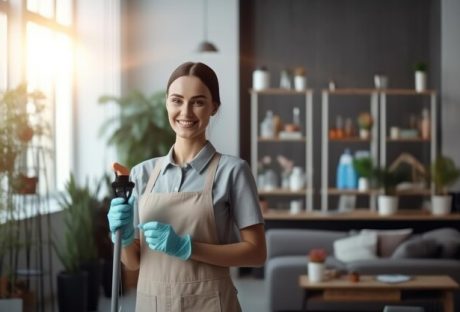Biophilic design has become a popular global interior design trend. Pinterest Business reported a 100% increase in searches for “biophilic design bedroom” between 2019 and 2021.
This design approach is rooted in biophilia, humans’ innate affinity with the natural world.
Moreover, it has practical applications in design. Research indicates that it can positively affect productivity and well-being.
For instance, a study showed that people spent 11% more time in biophilic-inspired hotel lobbies.
Similarly, schools in Washington State saw a 5% increase in student test scores and a 15% reduction in absenteeism with a biophilic design approach.
Let us explore what interior designers suggest for a biophilic home and ideas that you must explore!
Understanding Biophilic Home Designs
The modern world of technology has taken a new direction towards nature. Robotics, AI, and the Internet of Things (IOT) have caused urban architects to incorporate biophilic designs.
These designs involve greenery and natural elements. It helps to improve air quality, airflow, circadian rhythm, heart rate, and human health.
Biophilic designs stimulate visual connection and enhance the multi-sensory experience using indoor plants and natural patterns.
Stephen Kellert and Edward O. Wilson, who founded biophilic designs, have made nature feel more accessible at home. He incorporates plants, sunlight, natural materials, and fresh air.
How To Make Your Home Biophilic?

Given below are the different aspects that you can add to your home for a biophilic design—
Add Plenty Of Greens
Integrating plants into your interior design can create a natural and inviting ambiance. Adding greens helps enhance the aesthetic aspects of a biophilic home, ensuring a calming environment. Moreover, indoor plants help purify the air inside your home.
However, this does not necessarily mean you must go overboard and transform your home into a tropical paradise.
You can opt for potted plants, hanging baskets, or even a simple vase with fresh-cut flowers. Match your live elements with the color scheme of your decor. Most home designing experts advise you to get more succulents for your home. These plants require less watering but look amazing in every setting.
Alternatively, nature-inspired artwork, botanical prints, or murals can bring the outdoors in.
The idea is to create a synergy between the artificial environment and the natural world. This home design can positively impact your mood, health, and well-being.
Therefore, incorporating natural elements into your interior design can create a more harmonious and balanced living. This biophilic element can be functional and beautiful at the same time.
Enable Natural Lighting
Incorporating natural light into interior spaces has numerous benefits.
Biophilic design emphasizes the connection between humans and nature. Therefore, it prioritizes light and space to create a healthier, harmonizing, and more comfortable environment.
Biophilic home designs use different components of warmth and sunlight. Natural light can blend the boundaries between the interior and exterior of a space.
For instance, large windows and skylights can allow sunlight to stream in, making a space more open and inviting.
Additionally, glass roofs and walls allow you to save electricity with natural lighting during the daytime.
If you can reduce your exposure to artificial lighting, you say goodbye to stress and fatigue. It helps invigorate the body and mind.
Therefore, we can design spaces incorporating biophilic principles to improve our well-being and strengthen our connection to nature. It creates spaces that promote well-being and encourage a greater appreciation for the natural world.
Use Organic Decor Items
Biophilic design is a concept that aims to connect people with nature by incorporating natural elements into the built environment.
To create a peaceful atmosphere and promote a sense of well-being in your home, incorporate natural materials like leather, wood, and stone for your decor items. This brings a natural touch to the textures, colors, and forms around your home.
Furthermore, using subdued and organic color schemes can also help to enhance the calming and stress-reducing properties of biophilic design. Handcraft your decor with jute ropes,
Therefore, you can create an affordable and easy-to-maintain space with these decor items. That is aesthetically pleasing and enhances your physical and mental health.
Maintain The Patio
Biophilia is an evolutionary concept that suggests humans have an innate affinity for nature. This idea is gaining traction in outdoor architecture and design as well.
Biophilic design is a concept that aims to create a connection with nature and its resources. To achieve this in your outdoor space, you can incorporate some major additions like the following:
- Eco-friendly composite decking.
- Vertical gardens.
- Green screens in small spaces.
Native plants can help support wildlife and blur the boundaries between the territory and nature. Therefore, it is essential to consider factors such as sunlight exposure and irrigation when selecting plant species for your patio.
Furthermore, incorporating water elements like fountains or cascades can help create a tranquil atmosphere.
It is also important to choose outdoor furniture inspired by nature instead of plastic. Install fire pits made of natural materials like stone or metal. This can help create a comfortable and inviting outdoor biophilic space.
Let The Air Flow
Achieving a biophilic home design involves paying attention to the air circulation within each room.
You can start by determining the direction of the wind around your home. Next, open your windows accordingly to facilitate the flow of fresh air.
Additionally, you can enhance the airflow in your home by ensuring that your rooms are spacious and free of clutter.
Consider using furniture that provides ample storage space to keep your rooms organized and uncluttered. This allows the air to circulate freely throughout your home.
By creating a well-ventilated and spacious environment, you can enhance the biophilic design of your home. Therefore, bring nature indoors and improve your overall well-being.
Add Water Features
Adding water features like cascades, fountains, or reflecting pools to your outdoor space can incorporate a biophilic design. It helps create a serene atmosphere.
The sound and sight of water can instantly transport you to nature and induce a feeling of tranquility and relaxation.
You can go for a small pond or stream in your backyard if you have a generous budget. This addition can create a more natural and immersive experience.
However, a small water fountain in your garden, patio, or deck can do the trick if you prefer a simpler option.
It’s a quick and easy way to add elegance and calmness to your outdoor space!
Wrap It Up With A Fire Pit
Adding a fire pit to your outdoor space can significantly impact its ambiance and appeal.
By creating a warm and inviting atmosphere, fire pits can make your outdoor area a more comfortable and enjoyable place to spend time.
Furthermore, fire is a natural element that can uniquely evoke feelings of tranquility and connection with nature.
Therefore, incorporating a fire pit into your outdoor design can help create a biophilic environment that promotes relaxation and well-being.
Read Also:





















